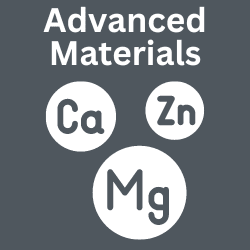Trajectory mixing is an innovative, patented technology that replaces traditional stirring and kneading tools with dynamic motion processes. Discover the trajectory mixing process, its physical principles, the mechanisms for optimizing mixing quality, and the specific application areas.
Process of Trajectory Mixing
Lissajous Figures
Lissajous figures generate flow patterns within the material that promote uniform distribution of all components. The specific shape of a Lissajous figure depends on the frequencies and phase relationships of the oscillations. By adjusting these parameters, different mixing requirements can be met.
Physical Principles
Shear and Tensile Forces
The generated shear forces contribute to breaking down the mixed components, while the tensile forces help distribute those components evenly. Continuously changing the oscillation parameters ensures that every part of the batch is exposed to these forces uniformly, resulting in high mixing quality.
Dynamic Adjustment
Dynamic adjustment of the motion profiles allows precise tuning of mixing conditions to match the properties of the material and the desired product characteristics. This capability is especially important when processing sensitive materials that could be damaged by excessive shear forces.
Optimization of Process Parameters
The efficiency and quality of trajectory mixing depend heavily on optimizing key process parameters. The most important factors include speed, acceleration, vibration frequency and amplitude, and the starting points of the motion paths.
Speed and Acceleration
Speed and Acceleration
Higher speeds and accelerations increase the shear forces generated and accelerate the mixing process. However, these parameters must be carefully balanced to prevent overprocessing or damage to the material.
Starting Points of the Motion Axes
Starting Points of the Motion Axes
Choosing optimal starting points for each axis can enhance the distribution of shear forces throughout the material. This ensures a uniform mix and reduces the risk of separation or segregation.
Application Possibilities
Trajectory mixing is used in a wide range of applications, including:
Liquid–Liquid Mixing
rajectory mixing delivers stable, uniform blends of liquids. The process significantly improves the consistency and stability of the final product.
Solid–Liquid Mixing
When producing suspensions and pastes—such as battery slurries or cooked hams—trajectory mixing provides efficient dispersion and homogenization of solid particles in a liquid medium.
Solid–Solid Mixing
For dry blends like ceramics or animal feed, trajectory mixing achieves a uniform distribution of all components, resulting in consistently high product quality.
Quality Assurance in the Mixing Process
A primary objective is achieving a high degree of mix uniformity, defined by the even distribution of all components. This is quantified through sample analyses, where minimal variance in concentration serves as an indicator of excellent mixing quality.
Measuring and Optimizing Mix Uniformity
Measuring and Optimizing Mix Uniformity
Mix uniformity is assessed via sample analyses—low variance in component distribution indicates high quality. Optimization requires adjusting process parameters, supported by experimental studies and simulations. Continuous monitoring and fine-tuning of motion profiles ensure that quality requirements are consistently met.





